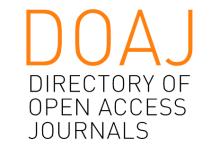Resource information
The paper wants to analyze a highly operative aspect of the interventions related to the Bagnoli Project and the extension of the subway line nr. 6 to Bagnoli. The two projects strictly integrate the urban transformation projects in the implementation of the mobility system. The two societies that realize the project are Bagnolifutura SpA Urban Transformation Society, and Ansaldo STS SpA. The first has the task to act the executive urban plan of Bagnoli-Coroglio; the latter is one of the main company in the global railway & mass transit transportation systems and it is licenseed for design and construction of the line nr 6. The paper, in the whole complex process, wants to analyze particularly the long coordination process among the subjects responsible for the various design and construction phases and the equally hard work necessary for the granting of approvals. In other words, the paper wants to show that the expected and/or obtained results in terms of land-transport integration come not only from a rigorous design process, but mainly from a structured, long and often difficult activity of technical consensus building. For this result many meetings are necessary , field tests, surveys, expert analysis, but also the definite time for closing the significant phases of the procedure, avoiding the risk of indefinite times for discussion, never compatible with the timing of the funding. The definition of the trackwork, for example, is a synthesis moment of many requirements that must be met; their acceptance is never immediate, but it is verified only after a recursive process that assembles one after the other the pieces of a mosaic. It is a team effort involving multiple disciplines and a large number of professionals; they must work in close contact, making sure that the information’s flow in the right way, that the taken decisions are transparent, clear, and that are known to all; everyone must have the availability to revise some of the own work or, in extreme cases, to restart the process. A necessary first step of comparison has involved the layout of the railway line and the level of the track. During several meetings, audits, and technical evaluation stages, a series of design alternatives are studied, and are discarded all the hypotheses of trenches or close to the ground parts. The only possible choice was the creation of a tunnel starting from Campegna, that continues along the Sport Park, reaches Steel Mill, Science City and the Park Gate, serving the nodal points in the area. Among others, two engineering aspects are faced in the project’s development: the provision of electricity and water for the metro line, and the interference of the line with a large sewer pipe in the area. Another aspect is the integration between the architecture and the landscape as regards the stations and the gateways, with particular attention to the industrial archeology buildings.
Il contributo proposto, partendo dal Progetto Bagnoli e dall’ampliamento della linea 6 della Metropolitana verso Bagnoli, vuole analizzare un aspetto fortemente operativo di tali interventi. Si tratta, nel complesso, di progetti in cui la trasformazione urbana in atto è fortemente integrata all’implementazione del sistema della mobilità. Due i soggetti attuatori, Bagnolifutura SpA Società di Trasformazione Urbana cui è demandata l’attuazione del Piano Urbanistico Esecutivo di Bagnoli-Coroglio e Ansaldo STS SpA, azienda leader nel settore del Trasporto ferroviario e metropolitano e concessionario per la progettazione e realizzazione della linea 6. Dell’intero processo si vuole fare particolare riferimento al lungo lavoro di coordinamento tra i soggetti preposti alle diverse fasi progettuali e realizzative e all’altrettanto lungo lavoro necessario per il rilascio delle autorizzazioni di legge. In altre parole si vuole dimostrare come i risultati attesi e/o ottenuti anche in tema di integrazione trasporti-territorio derivano non solo da un rigoroso iter progettuale, ma soprattutto da una articolata, lunga e spesso difficile attività di costruzione del consenso tecnico. Sono necessari più incontri, verifiche sul campo, rilievi, analisi specialistiche, ma anche di un tempo certo di chiusura di fasi significative del procedimento, scongiurando il rischio di un tempo infinito di discussione che non è mai compatibile con i tempi del finanziamento. La definizione del tracciato, ad esempio, è un momento di sintesi di molteplici istanze che devono essere accolte, che non trovano mai risoluzione immediata, ma solo dopo un iter ricorsivo che mette a posto prima i tasselli più grandi e via via quelli più piccoli del mosaico che si va a comporre. È un lavoro di squadra che coinvolge molteplici discipline e un gran numero di professionisti, che devono lavorare in stretto contatto, avendo cura che le informazioni circolino nella maniera corretta, che ci sia trasparenza e chiarezza nelle decisioni che man mano vengono adottate e che queste determinazioni siano note a tutti; tutti devono avere la disponibilità a rivedere parte del proprio lavoro o in casi estremi a ripartire daccapo. Una prima necessaria fase di confronto ha riguardato il tracciato planimetrico e la quota del ferro. Nel corso di numerosi incontri, verifiche e fasi di valutazione tecnica, vengono studiate alternative di progetto, scartate tutte le ipotesi di tratti in trincea e a raso, scelta la sola realizzazione in galleria che partendo da Campegna prosegue lungo il Parco dello sport, raggiunge Acciaieria, Città della Scienza e Porta del Parco servendo di fatto i punti nodali dell’area. Tra i tanti, due aspetti ingegneristici sono affrontati nel corso del progetto: la fornitura di energia elettrica e di acqua per la metropolitana, le interferenze del tracciato con grossi collettori fognari presenti nella zona. A raso, invece di rilievo l’integrazione architettonico-paesaggistica delle uscite e delle stazioni con particolare attenzione alle emergenze di archeologia industriale.



